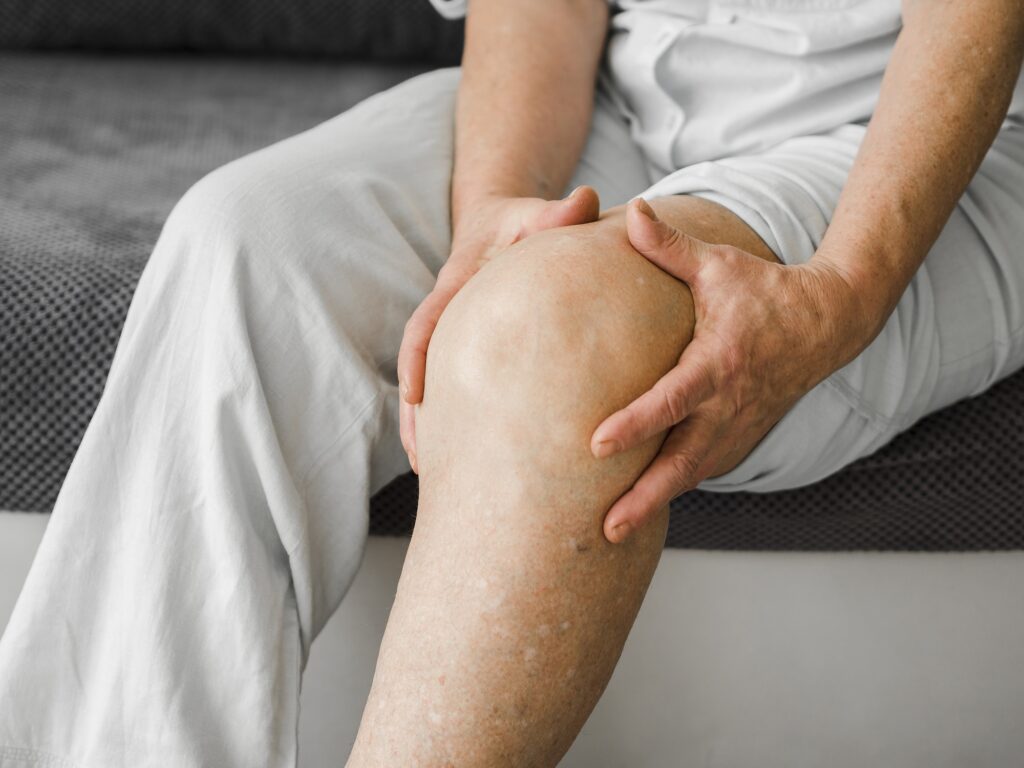Are you experiencing joint pain or stiffness that seems to worsen over time? It may be time to pay attention to the early signs of arthritis. Arthritis is a common condition that affects millions of people worldwide, but early detection and treatment can make a significant difference in managing the symptoms and preventing further damage. In this article, we will explore how to recognize the early signs of arthritis and when it’s crucial to seek medical help.
Arthritis can manifest in many different ways, depending on the type of arthritis you have. From joint pain and swelling to diminished range of motion, knowing what to look for can help you take prompt action. We’ll discuss the specific symptoms that may indicate the onset of different types of arthritis.
As with any medical condition, it’s essential to consult with a healthcare professional for an accurate diagnosis and appropriate treatment. Timely intervention can help alleviate pain and improve your quality of life. Knowing the early signs of arthritis and when to seek help is the first step towards finding relief and effectively managing this chronic condition for the long term.
What is Arthritis?
Arthritis is a term that describes a group of diseases affecting the joints and surrounding tissues. It is characterized by inflammation, which can lead to pain, stiffness, and a decrease in range of motion. Arthritis is not a single disease; it encompasses more than 100 different types, each with its own set of symptoms and treatment options.

The most common types of arthritis include osteoarthritis, caused by wear and tear of the cartilage, and rheumatoid arthritis, an autoimmune condition where the body’s immune system attacks the joints. Despite the differences, most types of arthritis share the common symptoms of pain, swelling, and reduced flexibility.
Understanding the nature of arthritis is crucial for recognizing its early signs and symptoms. By knowing what to look for, individuals can take proactive steps toward seeking medical advice and getting the appropriate treatment to manage their condition effectively.
Types of Arthritis
Arthritis can be broadly categorized into two main types: osteoarthritis and rheumatoid arthritis. However, other forms such as psoriatic arthritis, gout, and lupus also fall under the arthritis umbrella, each presenting unique symptoms and challenges.
Osteoarthritis is the most common form, affecting millions worldwide. It usually occurs in older adults but can also result from injury or overuse of joints. Rheumatoid arthritis, on the other hand, is an autoimmune disease that can occur at any age. It causes the immune system to attack the lining of the joints, leading to inflammation and joint damage.
Understanding these types is essential for recognizing the specific symptoms associated with each. While some signs are common across all forms of arthritis, others are unique to the type of arthritis you may have. Being aware of these differences is key to early detection and treatment.
Symptoms of Arthritis
The symptoms of arthritis can vary widely depending on the type, but most forms of the condition share some common signs. Pain, stiffness, and swelling in the joints are the most frequent symptoms reported by those affected. This discomfort often worsens in the morning or after a period of inactivity.
Other common symptoms include a decreased range of motion in the affected joints, making it difficult to perform everyday tasks. Some individuals may also experience redness and warmth around the affected area, signifying inflammation.

Recognizing these symptoms early on is crucial for seeking timely medical intervention. Early detection can significantly impact the management of the condition, preventing further joint damage and preserving quality of life.
Early Signs of Arthritis
The early signs of arthritis might be subtle and easily overlooked, but they are the key to preventing the progression of the disease. One of the first signs to look out for is joint stiffness, especially upon waking up or after sitting for prolonged periods.
Another early indicator is joint pain that seems to worsen after activity or at the end of the day. This pain might start as a mild, occasional discomfort but can gradually become more persistent and severe.
Paying attention to these early signs and recognizing when they deviate from normal aches and pains can lead to earlier diagnosis and treatment. This proactive approach can help manage symptoms more effectively and slow down the disease’s progression.
Importance of Early Detection
Early detection of arthritis is paramount in managing the disease effectively. Catching the condition in its early stages can prevent significant joint damage and disability, allowing for a broader range of treatment options.
When arthritis is diagnosed early, interventions such as physical therapy, lifestyle modifications, and medication can be more effective in slowing disease progression. This proactive approach can also minimize the impact of arthritis on your quality of life, enabling you to maintain mobility and independence for longer.
Understanding the importance of early detection encourages individuals to seek medical advice at the first signs of joint discomfort. This awareness can lead to quicker diagnoses, more effective treatment plans, and a better overall prognosis.
When to Seek Medical Help
Knowing when to seek medical help is crucial in the battle against arthritis. If you experience persistent joint pain, stiffness, or swelling that does not improve with rest or over-the-counter pain relievers, it’s time to consult a healthcare professional.
Additionally, if you notice a decrease in your range of motion or if joint symptoms start to interfere with your daily activities, these are clear indicators that medical evaluation is needed. Don’t wait for the symptoms to become unbearable before seeking help; early intervention is key.
A healthcare provider can assess your symptoms, conduct necessary tests, and determine the best course of action for your specific condition. Seeking help early can lead to more effective management of arthritis and a better quality of life.
Diagnosis and Tests for Arthritis
Diagnosing arthritis involves a comprehensive evaluation by a healthcare provider, including a physical examination and review of your medical history. Your doctor may also order a series of tests to confirm the diagnosis and determine the type of arthritis you have.

Blood tests are commonly used to detect markers of inflammation or antibodies associated with certain types of arthritis, such as rheumatoid arthritis. Imaging tests, like X-rays or MRIs, can reveal details about the condition of your joints and the extent of any damage.
These diagnostic tools are essential for developing an effective treatment plan tailored to your specific needs. They help in identifying the type of arthritis, assessing the severity of the condition, and monitoring disease progression over time.
Treatment Options for Arthritis
Treatment for arthritis aims to reduce symptoms, improve joint function, and prevent further damage. Options vary depending on the type and severity of arthritis but may include medications, physical therapy, and lifestyle changes. In some cases, surgery may be necessary to repair or replace damaged joints.
Medications can play a crucial role in managing pain and inflammation. These may range from over-the-counter pain relievers to prescription drugs that target the underlying causes of inflammation in autoimmune forms of arthritis.
Physical therapy and exercise are also vital components of arthritis treatment. They can help strengthen the muscles around the joints, improve flexibility, and reduce pain. Adopting healthy lifestyle habits, such as maintaining a healthy weight and eating a balanced diet, can further support joint health and overall well-being.
Lifestyle Modifications for Managing Arthritis
In addition to medical treatments and taking multivitamins, making certain lifestyle modifications can significantly impact the management of arthritis. Regular exercise, for instance, can help maintain joint flexibility and muscle strength, reducing the overall burden of the disease.

Eating a healthy diet rich in anti-inflammatory foods can also play a role in managing arthritis symptoms. Foods high in omega-3 fatty acids, antioxidants, and fiber have been shown to reduce inflammation and support joint health.
Finally, it’s essential to listen to your body and avoid activities that exacerbate joint pain. Learning to recognize and respect your limits can prevent overexertion and protect your joints from further damage.
Conclusion
Recognizing the early signs of arthritis and understanding when to seek medical help are critical steps in managing this chronic condition effectively. By paying attention to your body and taking prompt action, you can mitigate the impact of arthritis on your life.
Early detection, combined with appropriate medical intervention and lifestyle modifications, can help control symptoms, preserve joint function, and maintain a high quality of life. Remember, you’re not alone in this journey—seek support from healthcare professionals, loved ones, and arthritis support groups to navigate the challenges of living with arthritis.
As we continue to advance in our understanding and treatment of arthritis, there is hope for those affected by this condition. Taking an active role in your health care and staying informed about your options can empower you to lead a fulfilling life despite arthritis.